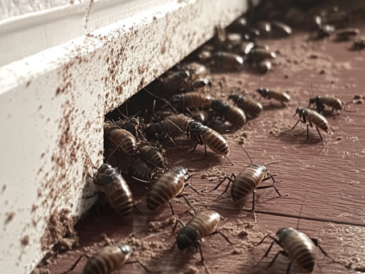Spider plants (Chlorophytum comosum) are beloved for their vibrant green leaves, air-purifying qualities, and ease of care. But if you want your spider plant to grow big, bushy, and thriving, it takes more than just occasional watering. Follow these 10 expert tips to help your spider plant reach its full potential!
1. Provide Bright, Indirect Light ☀️
Spider plants thrive in bright, indirect sunlight. Direct sunlight can scorch their leaves, while too little light may cause them to grow slowly or lose their variegation.
- Place your spider plant near an east- or west-facing window.
- If natural light is limited, consider using a grow light.
🌟 Pro Tip: Rotate the plant every couple of weeks to encourage even growth.
2. Water Correctly 🚿
Spider plants prefer slightly moist soil, but overwatering can lead to root rot.
- Allow the top 1-2 inches of soil to dry out between waterings.
- Use room-temperature, non-chlorinated water (filtered or rainwater works best).
🌟 Pro Tip: Yellowing tips might indicate fluoride sensitivity—switch to distilled water if needed.
3. Maintain Humidity Levels 💧
Although spider plants tolerate dry conditions, they flourish in moderate humidity.
- Mist the leaves occasionally, especially in winter when indoor air tends to be dry.
- Place a humidity tray or a small humidifier near the plant.
4. Choose the Right Soil and Pot 🪴
Spider plants need well-draining soil to prevent soggy roots.
- Use a light, all-purpose potting mix with added perlite or sand for drainage.
- Select a pot with drainage holes to avoid waterlogging.
🌟 Pro Tip: Terra cotta pots can help wick away excess moisture and keep the roots healthy.
5. Fertilize Regularly 🌱
A well-fed spider plant grows bigger and healthier.
- Use a balanced, water-soluble fertilizer (10-10-10 or similar) every 4-6 weeks during the growing season (spring and summer).
- Avoid over-fertilizing—it can cause brown leaf tips.
🌟 Pro Tip: Dilute the fertilizer to half strength to prevent buildup in the soil.
6. Prune and Trim Smartly ✂️
Regular pruning helps keep spider plants looking neat and encourages growth.
- Trim off yellow or brown leaves with sterilized scissors.
- Cut back long stems if they’re becoming too leggy or unbalanced.
🌟 Pro Tip: If the plant produces too many babies (spiderettes), remove a few to redirect energy back to the parent plant.
7. Repot as Needed 🌿
Spider plants are fast growers and may become root-bound.
- Check the roots every year; if they’re circling the pot, it’s time to repot.
- Move to a slightly larger pot, no more than 1-2 inches wider than the current one.
🌟 Pro Tip: Repotting in spring gives your spider plant the best chance to recover and thrive.
8. Propagate for Fullness 🌸
Spiderettes (baby plants) can be propagated to create a fuller, bushier appearance.
- Gently plant spiderettes in the same pot as the parent plant.
- Alternatively, root them in water until they develop strong roots before replanting.
9. Watch for Pests and Diseases 🐜
Spider plants are hardy, but pests like aphids, spider mites, or mealybugs can occasionally attack.
- Regularly inspect your plant for signs of infestation.
- Treat pests with insecticidal soap or neem oil.
🌟 Pro Tip: Wipe leaves with a damp cloth to remove dust and deter pests.
10. Avoid Temperature Extremes 🌡️
Spider plants thrive in temperatures between 65-75°F (18-24°C).
- Keep them away from cold drafts, heaters, or air conditioners.
- Avoid sudden temperature fluctuations.
🌟 Pro Tip: A stable environment encourages steady growth and prevents stress.
Conclusion
With these 10 secrets, your spider plant will grow bigger, healthier, and more vibrant than ever. Remember, spider plants are resilient and forgiving, so even beginners can succeed with a little care and attention.
🌿 Transform your home into a lush paradise with thriving spider plants! 🌿




